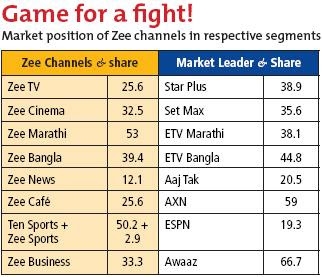IIPM BEST B-SCHOOL
After US housing & bonds, next bubble to burst could be excessive US consumption
Irrespective
 whether one looks at equities, commodities, real estate, art, any kind of useless collectibles or bonds, anywhere in the world, prices have soared over the last few years. We are truly in an asset bubble of unprecedented proportions and that these bubbles will eventually end badly, should be clear. So far we had US housing rolling over as well as more recently bonds around the world. But what about the next bubble to pop? I have explained before that in today’s liquidity- driven environment, US asset prices – in particular the housing and stock markets – are the primary engine of growth for the US consumer. It’s now, how assets drive the economy and not how the economy drives asset prices. Even Greenspan, chief architect of the global asset bubble, admitted two years ago that “the determination of global economic activity in recent years has been influenced importantly by capital gains on various types of assets, and the liabilities
whether one looks at equities, commodities, real estate, art, any kind of useless collectibles or bonds, anywhere in the world, prices have soared over the last few years. We are truly in an asset bubble of unprecedented proportions and that these bubbles will eventually end badly, should be clear. So far we had US housing rolling over as well as more recently bonds around the world. But what about the next bubble to pop? I have explained before that in today’s liquidity- driven environment, US asset prices – in particular the housing and stock markets – are the primary engine of growth for the US consumer. It’s now, how assets drive the economy and not how the economy drives asset prices. Even Greenspan, chief architect of the global asset bubble, admitted two years ago that “the determination of global economic activity in recent years has been influenced importantly by capital gains on various types of assets, and the liabilities that finance them. Our forecasts, and hence, policy are becoming increasingly driven by asset price changes.” Therefore, it is likely that the next bubble to burst could be excessive US consumption, which would obviously have dire consequences for US economy and specifically for retailers and other consumer related discretionary spending sectors. In this respect, the following should be of interest. Same-store sales were down 2.4% year-over-year in April, according to the International Council of Shopping Centers – the biggest drop since the trade group began tracking the data in 1970. A record 80% of retailers missed their sales targets – double the norm of 42%. Also, had banks not eased lending standards for credit cards, it is likely that consumption in April would have been even worse. One really has to wonder about the sanity of easing credit conditions for credit cards at a time when the consumer is already badly stretched. The tightening of other consumer credit lending standards reflects harder to borrow conditions for home equity loans.
that finance them. Our forecasts, and hence, policy are becoming increasingly driven by asset price changes.” Therefore, it is likely that the next bubble to burst could be excessive US consumption, which would obviously have dire consequences for US economy and specifically for retailers and other consumer related discretionary spending sectors. In this respect, the following should be of interest. Same-store sales were down 2.4% year-over-year in April, according to the International Council of Shopping Centers – the biggest drop since the trade group began tracking the data in 1970. A record 80% of retailers missed their sales targets – double the norm of 42%. Also, had banks not eased lending standards for credit cards, it is likely that consumption in April would have been even worse. One really has to wonder about the sanity of easing credit conditions for credit cards at a time when the consumer is already badly stretched. The tightening of other consumer credit lending standards reflects harder to borrow conditions for home equity loans.Since
 interest rates on credit card balances are the highest, we should conclude that a large number of consumers are in a financially rather desperate situation and that once they realize that home prices will not recover any time soon while food, energy prices and other prices continue to increase, their spending is likely to be curbed rather significantly. In fact, year todate, the United States Specialty Store Index has been one of the worst performers dropping 3.2%. Given specialty stores’ premium valuation compared to the S&P 500 and specialty stores’ elevated earnings, we would advise to avoid the sector as well as other retailers, which derive a high percentage of their sales from consumer discretionary items. Why drug and grocery store sales are rising at an annual rate of 7%, while discretionary sales are languishing?
interest rates on credit card balances are the highest, we should conclude that a large number of consumers are in a financially rather desperate situation and that once they realize that home prices will not recover any time soon while food, energy prices and other prices continue to increase, their spending is likely to be curbed rather significantly. In fact, year todate, the United States Specialty Store Index has been one of the worst performers dropping 3.2%. Given specialty stores’ premium valuation compared to the S&P 500 and specialty stores’ elevated earnings, we would advise to avoid the sector as well as other retailers, which derive a high percentage of their sales from consumer discretionary items. Why drug and grocery store sales are rising at an annual rate of 7%, while discretionary sales are languishing?I should like to emphasize that each investor must decide for himself how much risk he can take, given his particular financial condition and under consideration of his entire exposure to asset markets. Obviously, I cannot be each reader’s personal financial planner...
For Complete IIPM Article, Click on IIPM Article
Source : IIPM Editorial, 2007
An IIPM and Professor Arindam Chaudhuri (Renowned Management Guru and Economist) Initiative
For More IIPM Info, Visit Below....
ARINDAM CHAUDHURI’S 4 REASONS WHY YOU SHOULD CHOOS...IIPM :- Cicero's Challenge is going global
The Indian Institute of Planning and Management (I...
After CDMA, will nokia miss the 3G bus ?
Time for Awards at IIPM
STUDENTS AGAINST CORRUPTION & KICKBACKS : SACK
HRIC :- Human Resource Intelligence Cell
Heavy dut(t)y stress Sanjay Dutt Bollywood Actor
The Business of B-School Rankings & The Big Farce
36TH Full Time Programme In Planning & Entrepreneu...
Courtney to quit courting cigarettes!



-+Azim+Premji+(Wipro),+S+Ramadorai+(TCS)+and+Nandan+Nilekani+(Infosys).JPG)













